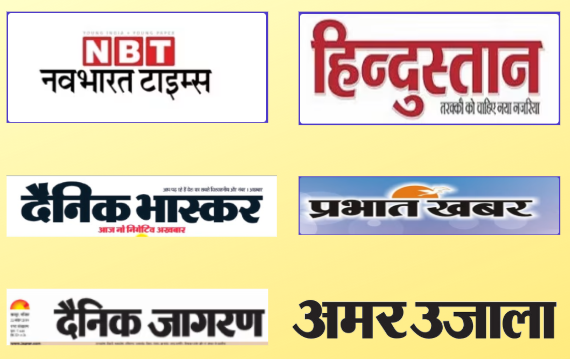– Md. Sami Ahmad
A brief analysis of Hindi newspapers’ coverage of April 22 Pahalgam terror attack reveals anti-Muslim communal undertones and elements of sensationalism. Analysts feared that the manner in which these newspapers framed the attack risked exacerbating communal tensions.
At least six prominent Hindi newspapers – Nav Bharat Times, Hindustan, Dainik Jagran, Dainik Bhaskar, Amar Ujala, and Prabhat Khabar – are widely read across the Hindi heartland, including Uttar Pradesh, Bihar, New Delhi, Madhya Pradesh, Rajasthan, Chhattisgarh, and Jharkhand.
The coverage by these Hindi dailies has increasingly become a matter of concern, particularly in communally charged climates, due to their alleged bias against the Muslim community. These newspapers emphasised the religious identity of the victims but lacked coverage on how local Muslims helped the stranded tourists, offering free services, including food and shelter.
It was evident that the focus of these newspapers was on the religious identity of the victims of the tragedy, even though there were a couple of foreign tourists and a brave Muslim man who also lost their lives. The accounts of the survivors tended to implicitly fuel anti-Muslim sentiments. Ignoring the diversity of casualties, the newspapers contributed to a misleading and communal narrative.
The repeated mention of terrorists asking for victims’ religion, without sufficient context about the terrorists’ motives or the broader Kashmir conflict, risked portraying the attack as a Muslim-led assault on Hindus.
Many believed that a proper contextual analysis was required following the attack, as the focus on the ‘Dharm puchh puchh kar mara’ narrative left space for communal interpretation.
One newspaper published sensational ‘reports’ including an unverified claim that terrorists checked victims’ circumcision to identify Hindus, further heightening communal tensions. While it did note condemnations from Muslim leaders, its overwhelming focus on religious targeting overshadowed more balanced narratives.
This graphic detail lacked corroboration from other credible sources, such as official police or NIA statements, and appeared to be an unverified or fabricated claim intended to inflame communal sentiments.
Though a couple of Hindi newspapers did highlight the bravery of thirty-year-old Syed Adil Hussain Shah, a ponywallah who was killed while trying to snatch a rifle from a terrorist during the Pahalgam attack, the graphic descriptions, selective focus on Hindu victims, and lack of editorial restraint contributed to the fuelling of communal sentiments.
While one newspaper cautiously wrote ‘Pehchan puchhkar mara’, others explicitly used ‘Dharm puchh kar mara’. This focus on religious targeting was seen as reinforcing anti-Muslim stereotypes, particularly among readers with pre-existing biases. In addition to the inflammatory circumcision claim, the amplification of rhetoric by the Rashtriya Bajrang Dal escalated this risk.
Two Hindi dailies reported that the terrorists asked victims to recite the Kalima, with a professor allegedly spared for complying. This detail, absent from official accounts, sensationalised the religious aspect of the incident. Such unverified claims risked framing the attack as a Muslim assault on Hindus.
While the newspapers did not explicitly incite anti-Muslim violence, certain aspects of their coverage could contribute to communal polarisation or reinforce anti-Muslim sentiment, particularly in a charged socio-political context.




